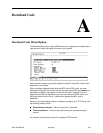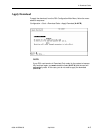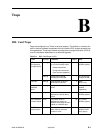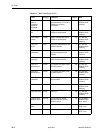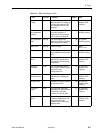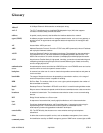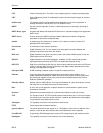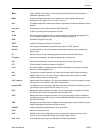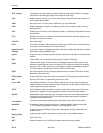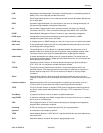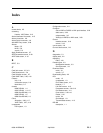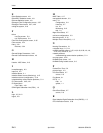
8000-A2-GB26-50 April 2001
GL-1
Glossary
10BaseT
A 10-Mbps Ethernet LAN that works on twisted-pair wiring.
AAL-5
The ITU-T classification for a simplified ATM Adaptation Layer (AAL) that supports
connection-oriented, delay-tolerant data traffic.
address
A symbol (usually numeric) that identifies the interface attached to a network.
agent (SNMP)
A software program housed within a managed network device, such as a host, gateway, or
terminal server. An agent stores management data and responds to the manager’s data
requests.
AN
Access Node. A DSL port card.
ARP
Address Resolution Protocol. Part of the TCP/IP suite, ARP dynamically links an IP address
with a physical hardware address.
ASCII
American Standard Code for Information Interchange. The standard for data transmission
over telephone lines. A 7-bit code establishes compatibility between data services. The
ASCII code consists of 32 control characters (nondisplayed) and 96 displayed characters.
ATM
Asynchronous Transfer Mode. A high-speed, low-delay, connection-oriented switching and
multiplexing technique using 53-byte cells to transmit different types of data concurrently
across a single physical link.
authentication
server
An authentication server can either be a RADIUS server or an XTACACS server and can be
used to confirm an end-user system’s access location.
backplane
A common bus at the rear of a nest or chassis that provides communications and power to
circuit card slots.
bandwidth
The range of frequencies that can be passed by a transmission medium, or the range of
electrical frequencies a device is capable of handling.
BER
Bit Error Rate. The number of bits in error over a given period compared to the number of
bits transmitted successfully.
BootP
Bootstrap Protocol. Described in RFCs 951 and 1084, it is used for booting diskless nodes.
bps
Bits per second. Indicates the speed at which bits are transmitted across a data connection.
broadcast
A method of transmission. The simultaneous transmission to two or more communicating
devices.
BVI
Bridge Virtual Interface on a Cisco router.
byte
A sequence of successive bits (usually eight) handled as a unit in data transmission.
CAP
Carrierless Amplitude Modulation and Phase Modulation. A transmission technology for
implementing a DSL. The transmit and receive signals are modulated into two
wide-frequency bands using passband modulation techniques.
central office
CO. The PSTN facility that houses one or more switches serving local telephone
subscribers.
client
A device that receives a specific service, such as database management, from a server.
community name
An identification used by an SNMP manager to grant an SNMP server access rights to MIB.



